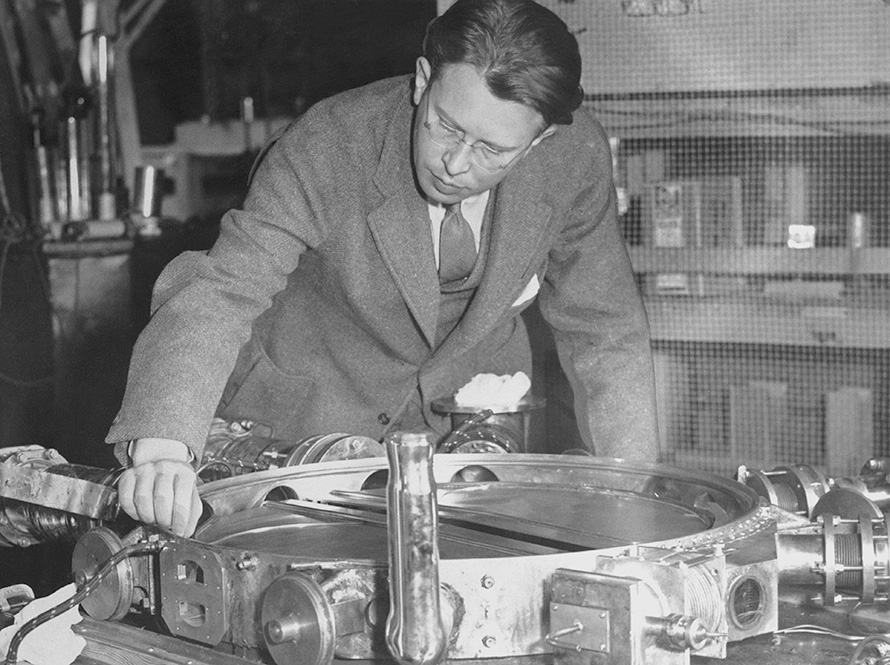He made vital contributions by taking on many tasks in the atomic bomb studies: Who is Ernest Lawrence?
He first worked on ionization and the ionization potential of metal vapor. In 1929, he discovered the "Egetron", which could accelerate nuclear particles to very high speeds at low voltages.

He was born on August 8, 1901, in Canton, South Dakota. His parents were Norwegian immigrants Carl Gustavus and Gunda Lawrence. He completed his primary education at Canton High School and then at St Olaf College. He received a degree in chemistry from the University of South Dakota in 1919.
He studied physics at the University of Chicago for a year. He received his doctorate degree from Yale University in 1925. He continued to work at Yale University as a national research member for the next two years and as an assistant for one year. In 1928, he was appointed as an associate professor at the University of California, Berkeley. Two years later he became Berkeley's youngest professor. He was appointed chief of the university's radiation laboratory, a position he held until his death in 1936.
Ernest Orlando Lawrence (August 8, 1901 – August 27, 1958) was an American nuclear physicist and winner of the Nobel Prize in Physics in 1939 for his invention of the cyclotron, being the youngest winner of the Nobel Prize in Physics. He is known for his work on uranium-isotope separation for the Manhattan Project, as well as for founding the Lawrence Berkeley National Laboratory and the Lawrence Livermore National Laboratory.
He made vital contributions by taking many roles in the atomic bomb studies during World War II. After the war years, as the American delegate at the Genoa Conference in 1958, he tried to reach an agreement to stop atomic bomb tests.
He first worked on ionization and the ionization potential of metal vapor. In 1929, he discovered the "Egetron", which could accelerate nuclear particles to very high speeds at low voltages.
Together with his brother Dr John Lawrence, head of the university's medical physics laboratory, a new particle called "Cyclotron" was found and used in applications in the fields of medicine and biology. He later became a consultant to the Columbia University Cancer Research Institute. Lawrence developed larger and more powerful models of the Cyclotron.
In 1941 the Cyclotron was used to artificially produce the cosmic particle meson. He later expanded his work to antiparticles.
Lawrence was a good writer. He published 56 publications between 1924 and 1940. He developed a method to measure time in billionths of a second by discharging electrical charge.
Moreover, he found a method that gives the ratio e/m, one of the fundamental constants of the universe, very precisely. He collected most of his work in the books "The Physical Review" and "The Proceedings of the National Academy of Sciences".
Some of the many awards he received are; the Franklin Institute's "Elliott Cresson Medal", the National Academy of Sciences' "Comstock Prize" award, the Royal Society's "Hughes Medal", the Royal Physical Society's "Duddell Medal", "Faraday Medal", " The Enrico Fermi” award and the 1939 Nobel Prize in Physics.
He was also honored with the "Medal of Merit".
He received honorary doctorates from thirteen American and one British university (Glasgow). He was a member of many American and foreign associations.
Lawrence married Mary Kimberly Blumer in 1932. They had six children. Boating, tennis, ice skating, and music were his interests. He died in California on August 27, 1958.
